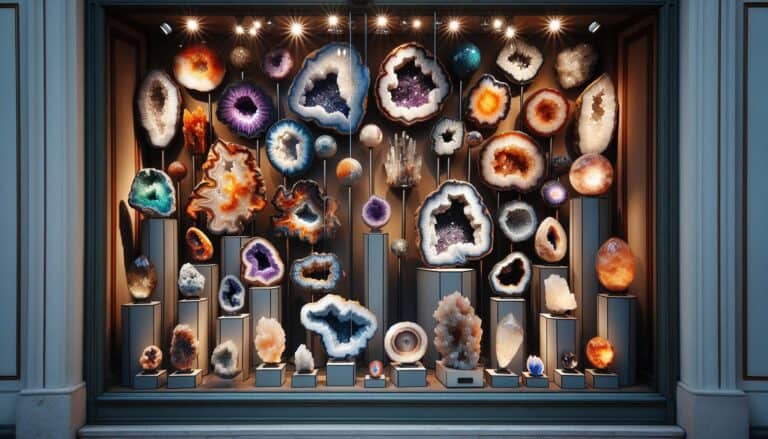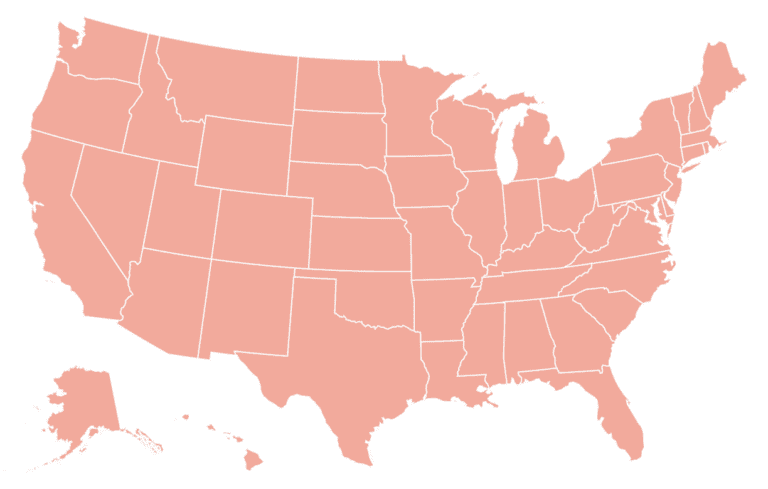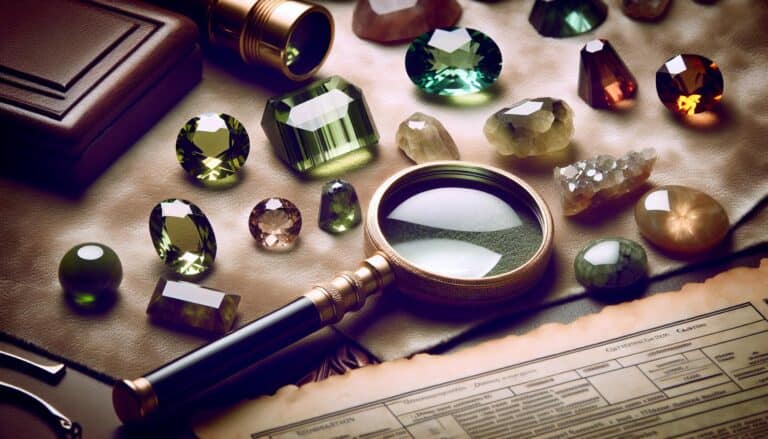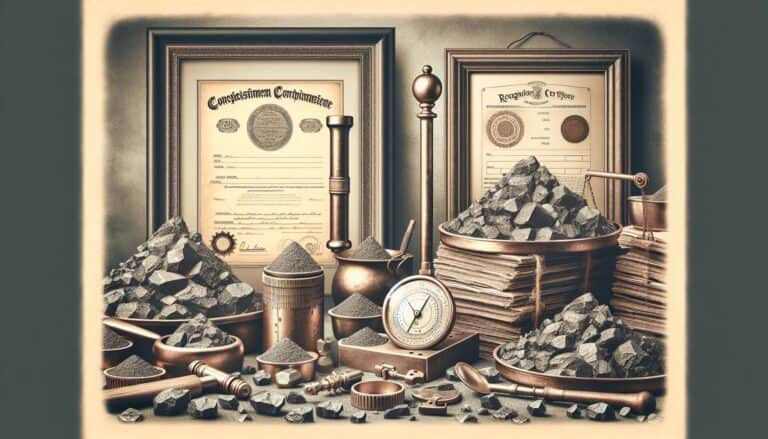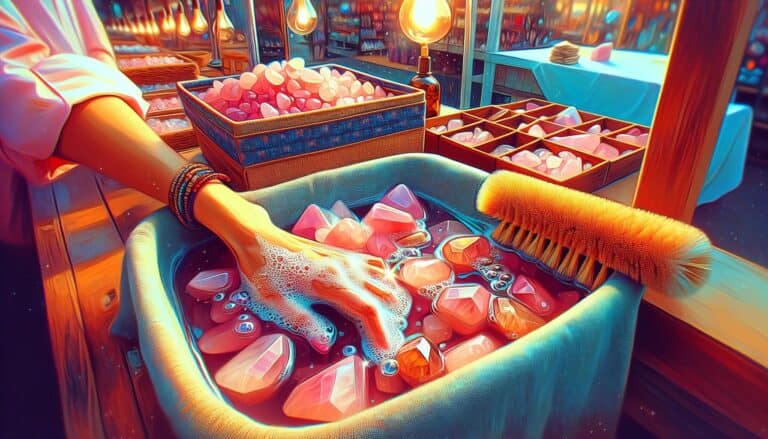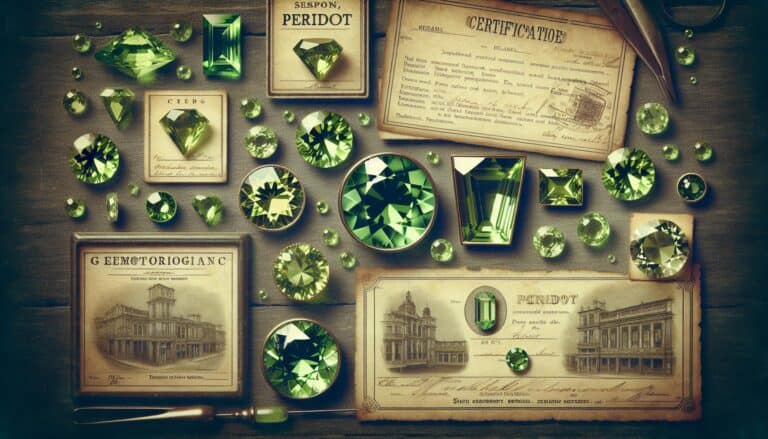Emeralds, those lush green gems that capture the essence of spring, are as valuable as they are beautiful.
You’ve probably marveled at their vibrancy, but have you ever wondered just how much they’re worth? Determining an emerald’s value can be as complex as the gem itself, with factors like color, clarity, cut, and carat playing pivotal roles.
Whether you’re a collector, an investor, or simply someone with a keen eye for luxury, understanding an emerald’s worth is crucial. It’s not just about the price tag; it’s about appreciating the rarity and the allure that have fascinated people for centuries.
Let’s delve into the world of emeralds and uncover the secrets behind their valuation.
Emeralds are valued for their vivid green color, clarity, cut, and carat weight. The most prized emeralds exhibit a deep, saturated green with few inclusions. High-quality cut and larger carat weight increase value. Origin affects value too, with Colombian emeralds often commanding higher prices due to their superior color.
What Is Emerald?
You might find yourself captivated by the rich green hue of an emerald, but what exactly is this precious gemstone? Emeralds are a variety of the mineral beryl, colored green by trace amounts of chromium and sometimes vanadium. Its verdant shade is not just a feast for the eyes but also a symbol of rebirth and love, setting it apart in gemstone lore.
The history of emeralds is as lush as the jungles that conceal them. These gemstones have been mined since antiquity, with some of the oldest emerald mines dating back to 330 BC in Egypt, known then as Cleopatra’s Mines. Today, some of the most significant sources include Colombia, Zambia, and Brazil, where the combination of geological factors create the perfect setting for emerald formation.
The International Gem Society ranks emeralds as a 7.5 to 8 on the Mohs scale of hardness, making them durable enough for regular wear but also prone to chipping and cracking if mishandled. When considering an emerald’s identity, you must also account for its treatments, which are common practices to improve the appearance of the stone. It’s quite typical for emeralds to undergo oil treatments to fill in fractures and enhance color. The type and extent of these treatments can significantly affect an emerald’s value.
In terms of spiritual significance, emeralds are believed to carry the energy of the Earth, nurturing compassion and unconditional love. They’re thought to promote emotional well-being and tranquility, qualities highly regarded by individuals drawn to the metaphysical properties of gemstones.
The physical and metaphysical characteristics blend together, endowing emeralds with a unique position in the gemstone kingdom. Its allure stretches beyond mere aesthetics, with each stone carrying a tale that’s as deep as its color. Whether you’re drawn to its vibrant tone, its storied past, or the richness it adds to jewelry, understanding emeralds is crucial to appreciating their worth.
Emerald Prices: Factors That Affect Value

Understanding the factors that influence the value of emeralds is essential as you navigate the gemstone market. Various characteristics play a role in determining how much an emerald is worth—from its inherent qualities to the dynamics of supply and demand.
Color, Clarity, and Cut Quality
When you’re evaluating emeralds, color is king. The most coveted shade is a rich, vivid green with a hint of blue. The exact hue can significantly impact the price, with intense, saturated greens commanding the highest figures. Clarity follows closely behind color in importance. Emeralds are known for their inclusions, often referred to as “jardin,” which is French for garden. However, stones with fewer inclusions that don’t impede the passage of light are more valuable. As for cut quality, a well-executed cut not only enhances the stone’s visual appeal but also its stability, reflecting light at the right angles to maximize the stone’s brilliance.
Optimal proportions and symmetry are key elements that affect an emerald’s cut quality. Emeralds with good symmetry and proportions will typically fetch a higher price. Yet, it’s important to note that because of emerald’s natural inclusions, an ideal cut isn’t always feasible, and cutters must work to minimize the visibility of these inclusions while maintaining as much weight as possible.
Market Demand and Availability
The value of emeralds is highly influenced by market demand and availability. Emerald rarity—the fewer emeralds there are available, the more valuable they typically become. High-quality emeralds are rare, making them more precious in the eyes of collectors and enthusiasts alike.
But it’s not just about scarcity; it’s also about where they come from. Emeralds from Colombia, for instance, are often the most sought-after due to their color and quality. Recent finds in other locations like Zambia have also affected the market, increasing the availability of quality stones and introducing competition. Keep in mind that while market trends can fluctuate, the allure of high-quality emeralds remains relatively constant, sustaining their value over time.
Evaluating emeralds requires keen insight into these factors and understanding that the market can be as complex as the stones themselves. With proper knowledge, you’ll be better equipped to ascertain the true value of these precious green gems.
Understanding Emerald: A Rare Gem

The Rarity of Emerald
Emeralds have long been one of the most highly sought-after gemstones, boasting a lush green hue that’s hard to find in nature. Their rarity stems from the unique conditions required for their formation. Emeralds are a form of beryl, and their signature green color comes from trace amounts of chromium and sometimes vanadium.
However, finding this combination is rare. Most emerald deposits are found in areas with rich mineral content that has been altered by hydrothermal processes over millions of years. This scarcity in occurrence contributes significantly to their value. Plus, high-quality emeralds are even rarer than diamonds, elevating their worth in the gem market.
Moreover, the finest emeralds are often found in small sizes, making large emeralds with exceptional color and clarity extraordinarily exceptional. As you collect or invest in emeralds, remember that their rarity plays a pivotal role in determining their price points.
Origins and Characteristics
Emeralds hail from various global locations, each with unique qualities and histories. Colombia is the most renowned source, with its emeralds prized for their unrivaled deep green color. Zambian emeralds are also highly valued, known for their slightly bluish green color and excellent transparency.
Here’s a quick look at how emerald origins can affect their value:
| Origin | Color | Notable Characteristics |
|---|---|---|
| Colombian | Deep Green | Slight bluish undertone, high warmth |
| Zambian | Bluish Green | Good clarity, consistent quality |
| Brazilian | Lighter Green | Larger sizes, yellowish undertone |
Not just origin, but individual characteristics can greatly influence an emerald’s worth, too. Emeralds typically host some inclusions, referred to as “jardin,” or garden, due to their plant-like appearance. While clarity is keenly sought after, some inclusions are accepted, providing they don’t overly compromise transparency or the beauty of the gem. This is where the term “eye-clean” becomes relevant – indicating gems that lack visible inclusions to the naked eye.
The specific hue of green, tone, and saturation level are crucial. The most prized emeralds showcase a vivid, pure green with no overtones of yellow or blue. Yet, nuances in shade can cater to a variety of preferences and budgets, ensuring there’s an emerald for virtually every aspiring collector.
Emerald Grading and Valuation
The Grading System for Emerald
Emeralds, much like diamonds, follow a grading system that determines their value. The Four Cs—color, clarity, cut, and carat weight—are the core criteria that experts use to assess these precious gemstones. When you’re looking into the value of an emerald, you’ll find color is paramount. The most sought-after emeralds flaunt a vivid, saturated green without any hints of yellow or blue. Clarity is next in line; the fewer the inclusions or imperfections, the higher the worth. However, unlike diamonds, some inclusions in emeralds, known as “jardin,” can be acceptable as this is a natural part of their formation. The cut of the emerald is essential, too. A well-executed cut can enhance the stone’s color and brilliance. Carat weight likewise impacts the price, with higher carat stones generally fetching more, provided the other Cs hold up.
- Color: Deep green with vivid saturation
- Clarity: Minimal inclusions; acceptable jardin
- Cut: Enhances color and brilliance
- Carat: Larger stones are more valuable, if quality is consistent
Emerald grading is less standardized than diamonds, so knowing the specific qualities that define a high-quality emerald is crucial when you’re assessing its worth.
Certification and Appraisal
Before you invest in an emerald, getting a certification from a reputable gemological laboratory is a smart move. Certificates provide an unbiased report on the gemstone’s natural origin and list its key characteristics. Laboratories such as the Gemological Institute of America (GIA) or the American Gem Society (AGS) are among the most respected in the industry.
When it comes to appraisal, you should ensure it’s carried out by a qualified and independent appraiser familiar with colored gemstones. The appraisal will consider the grading aspects discussed earlier and will often also take into account the stone’s provenance and historical significance, if any. Remember, the emerald market is rife with treated stones aimed at enhancing color and clarity. These treatments can affect value, so you should be well-informed about the emerald’s treatment history, which should be disclosed in both the certification and the appraisal.
Here’s a rundown of what you need to look for in an emerald certification and appraisal:
- Certification from a reputable lab: Authenticated gemstone characteristics
- Independent appraisal: Comprehensive valuation accounting for the Four Cs
- Treatment disclosure: Information on any enhancements made to the stone
- Provenance: Historical significance and origin factoring into overall value
Staying informed and seeking professional advice can lead you to make an educated decision about the worth of an emerald, with a keen understanding of its grading and valuation intricacies.
Current Market Trends in Emerald Pricing
High-quality emeralds are steadily climbing the ladder in popular gemstone markets, with prices reflecting their coveted status. You’ll find that emeralds from Colombia, known for their unrivaled rich green color, are often priced at a premium. With Colombian emerald prices rising annually, it’s essential to keep an eye on this trend if you’re considering an investment.
Market fluctuations are influenced by various factors including rarity, demand, and the economic climate. In recent years, Zambian emeralds have gained popularity as high-quality alternatives to Colombian stones, impacting global prices. Investors, collectors, and enthusiasts are now diversifying, looking beyond traditional sources for investment pieces.
Here are some insights into the current market:
- Demand: An increase in demand for natural and ethically sourced gemstones is pushing up the prices of emeralds.
- Supply: Political and economic factors in emerald-rich countries can disrupt mining operations, affecting supply and, consequently, market pricing.
- Treatments: Untreated or minimally-treated emeralds garner higher prices, reflecting purity and natural beauty.
In the luxury segment, brand and designer names can significantly influence the value of emerald pieces. Jewelry from high-end designers like Cartier or Tiffany often carry a premium not only for the gemstone but for the brand’s prestige and design.
The global appeal of emeralds is evident in auction houses where record-breaking sales of exceptional emerald pieces continue to make headlines. This surge is indicative of an upward trajectory in emerald valuation, especially for pieces with historical significance or those originating from renowned mines.
Understanding the nuances of emerald pricing will help you gauge the market effectively. Pay attention to quality indicators such as clarity and color intensity when comparing prices, as these greatly affect an emerald’s market value. Keep abreast of international trends and shifts in the gemstone market to make informed decisions for your collection or investment portfolio.
The Most Expensive Emerald
When you’re delving into the world of precious gemstones, few can capture the imagination like the rarest and most valuable emeralds. The reigning champion of pricey emeralds is the Bahia Emerald. It’s an extraordinary specimen that contains the largest single shard of emeralds ever found: an astounding 180,000 carats. This behemoth was discovered in Bahia, Brazil, and stands as a monument to the sheer potential value these gemstones can hold.
Yet, the Bahia is not the only emerald that’s fetched a small fortune. Auction houses like Christie’s and Sotheby’s frequently see remarkable specimens cross the block. For example, Elizabeth Taylor’s emerald pendant, part of her iconic jewelry collection, sold for over $6.5 million in 2011. The price was not only a reflection of the 23.46-carat emerald’s quality but also the storied history and celebrity provenance attached to it.
Price Tags of Illustrious Emeralds:
| Emerald Specimen | Carats | Sale Price | Auction House |
|---|---|---|---|
| Bahia Emerald | 180,000 | Not Sold* | Private Sale |
| Elizabeth Taylor | 23.46 | $6.5 Million | Christie’s |
*The Bahia Emerald was not publicly sold, its valuation remains speculative.
Premium emeralds can exceed the value of diamonds pound for pound by a significant margin. In May 2017, a 15.99-carat Colombian emerald ring was auctioned for about $5.5 million. That breaks down to approximately $344,000 per carat which is astounding by any standard in the gem market.
Factors that drive these prices include not only the carat weight and the presence of minor inclusions but the depth and vivacity of the color. Emeralds with a rich, verdant green that is consistent throughout the gem are highly prized. Origin also matters as Colombian emeralds are particularly revered for their color and history.
As an enthusiast or investor, tracking these spectacular auction results yields insight into what elements contribute to an emerald’s worth. Renowned pieces ascend beyond mere gemstone enthusiasts; they become historical artifacts coveted by collectors and institutions alike.
Buying Emerald: Tips and Recommendations
Where to Purchase High-Quality Emerald
When you’re in the market for an emerald, the quality of your purchase depends heavily on where you shop. It’s essential to choose reputable dealers or jewelers who specialize in high-quality gemstones. You might want to consider:
- Established jewelry stores with a focus on fine gemstones
- Auction houses like Christie’s or Sotheby’s, renowned for dealing in luxurious and authentic pieces
- Online gemstone marketplaces, but only those that offer certified gems and have a solid return policy
It’s always wise to shop around and compare prices and options. Remember, a high price doesn’t always guarantee high quality. Look for dealers with transparent sourcing, who provide detailed information about the history and origin of their emeralds.
Ensuring Authenticity and Value
To ensure you’re getting what you pay for, it’s critical to know how to assess an emerald’s authenticity and value. Always ask for a gemological certificate from a recognized lab like the GIA or AGS. This certificate should detail:
- Emerald’s origin
- Carat weight
- Grading of color and clarity
- Type of treatment the stone has undergone
Be mindful that treatments to enhance color can affect an emerald’s value. Unenhanced, natural emeralds are more scarce and thus, often more valuable. Avoid emeralds with too many inclusions, which can weaken the stone and reduce its value. Also consider:
- The hue, tone, and saturation of the color
- The cut, which should maximize the gemstone’s beauty rather than its size
- The setting for jewelry, ensuring that it’s designed to protect your emerald
Stay informed about current market prices and demand trends by keeping an eye on recent auctions and gemstone market reports. This data can give you a baseline for evaluating emeralds you’re interested in. Remember, knowledge is as valuable as the emerald itself when it comes to making a sound investment.
Conclusion: Buying & Selling Emerald
Determining the true worth of an emerald isn’t just about price tags—it’s about the value you place on quality and authenticity.
Armed with the knowledge of what makes a quality emerald and where to find them, you’re well-prepared to make an informed decision. Remember to prioritize certified gems from reputable sources and don’t shy away from asking the hard questions about origin and treatment. With this approach, you’ll find an emerald that’s not only beautiful but also a worthwhile investment.
Trust your instincts and the expertise you’ve gained; your perfect emerald is out there waiting for you.


